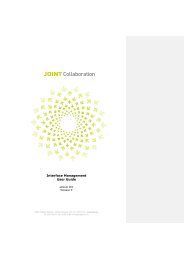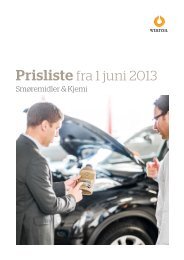Ida Ekblad MarIus Engh anawana haloba lars lauMann - Statoil
Ida Ekblad MarIus Engh anawana haloba lars lauMann - Statoil
Ida Ekblad MarIus Engh anawana haloba lars lauMann - Statoil
You also want an ePaper? Increase the reach of your titles
YUMPU automatically turns print PDFs into web optimized ePapers that Google loves.
and Australia, initiated an external study group under the name<br />
The Postcolonial Reader to introduce, read and discuss postcolonialism<br />
in an effort to approach visual culture from a non-<br />
Eurocentric model of history. The group eventually disbanded<br />
when the respective students graduated, but in the years that<br />
it operated in Oslo, its members discussed how the Occident is<br />
repeatedly at risk of giving itself over to the West or of being<br />
recast as more archaic, less diversified communities.<br />
Haloba’s relationship with the renowned performance artist<br />
Joan Jonas, her former tutor at the Rijksakademie, initiated<br />
yet a new cycle and process for the artist, marking a period<br />
when Haloba sought to delve more concretely into her own<br />
personal history and culture while interweaving more universal<br />
elements, which helped to extract this experience to a wider<br />
frame of understanding. Haloba cites the importance of the<br />
experimental filmmaker Maya Deren, who was so central to<br />
the work of Joan Jonas, as an influence on her own sensibility.<br />
Deren provided a model for breaking down the motif of ritual<br />
to explore the rendering of myths and divinities for the purpose<br />
of simple poetic pondering: How do people recreate different<br />
cultures, and how do they come to terms with the cultures from<br />
which they are borrowing? What are the parallels to be found<br />
from an artist such as Joan Jonas, who borrows and applies<br />
from a distance, and someone immersed in an internal exile<br />
who confronts these issues more directly and on an everyday<br />
basis? At the centre of these questions is an understanding that<br />
exile generates a creative imagination. While maintaining an<br />
analytical point of view from the perspective of Africa/Zambia/<br />
Lusaka/Oslo, Haloba seeks to unravel the global “narrative” that<br />
Enwezor refers to from an analytical perspective which is not<br />
about “storytelling” alone.<br />
At present, Anawana Haloba is immersed in research initiatives<br />
to further her understanding of the layers of her own native<br />
language. Reading Nonkeleko, the artist is studying Lozi society<br />
as it existed before British colonialism in order to learn more<br />
about self-governance and the role women played within that<br />
structure. A social history such as Nonkeleko or the 1954 film<br />
entitled Les Maitre Fous (Mad Masters), a film about Nigeria by<br />
the French filmmaker Jean Rouch, can provide the raw materials<br />
that help the artist understand ritual from the point of its falling<br />
apart and dissolution. In Haloba’s process of what Blanchot refers<br />
to as an “unworking”, she combines that which “exists before and<br />
beyond the work, with that which withdraws from the work, as a<br />
way to approach that which has neither to do with production or<br />
completion, but with interpretation and suspension and poetics.”<br />
maRta Kuzma<br />
103

















